
The Arctiini are a tribe of tiger moths in the family Erebidae.
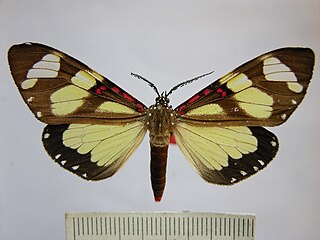
Phaloe is a genus of moths in the subfamily Arctiinae. The genus was erected by Félix Édouard Guérin-Méneville in 1838.
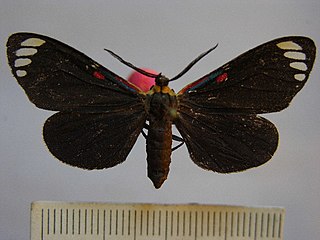
Phaloesia is a monotypic of tiger moth genus in the family Erebidae. Its only species is Phaloesia saucia, the saucy beauty moth. The genus and species were first described by Francis Walker in 1854. It is found from the lower Rio Grande Valley of Texas in the United States to Venezuela.

Calodesma maculifrons is a moth of the family Erebidae. It was described by Francis Walker in 1865. It is found in Mexico, Honduras, Costa Rica, Guatemala, Panama and Ecuador.

The Pericopina is a subtribe of tiger moths in the family Erebidae. The subtribe was described by Francis Walker in 1869.
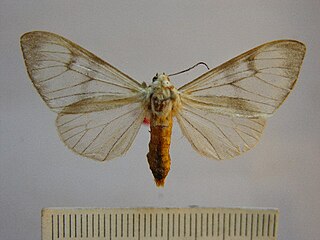
Dysschema amphissum is a moth of the family Erebidae first described by Carl Geyer in 1832. It is found in south-eastern Brazil, ranging from southern Minas Gerais and Rio de Janeiro, south to Rio Grande do Sul.

Dysschema arema is a moth of the family Erebidae first described by Jean Baptiste Boisduval in 1870. It is found in Nicaragua, Venezuela, Peru, Brazil and Ecuador.
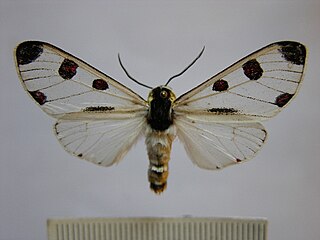
Dysschema boisduvalii is a moth of the family Erebidae first described by Jan van der Hoeven in 1840. It is found in Paraguay, Colombia, Brazil and Argentina.
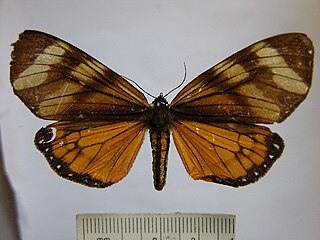
Dysschema eurocilia is a moth of the family Erebidae first described by Pieter Cramer in 1777. It is a common species throughout tropical America, where it has been recorded from the Antilles, Central America and South America.
Dysschema hilarum is a moth of the family Erebidae first described by Weymer in 1895. It is found in Brazil.

Dysschema leda is a moth of the family Erebidae first described by Herbert Druce in 1884. It is found in Costa Rica.
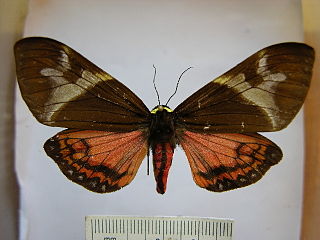
Dysschema lygdamis is a moth of the family Erebidae first described by Herbert Druce in 1884. It seems restricted to the mountains of Costa Rica and Panama.
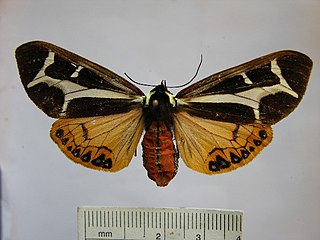
Dysschema thetis, the northern giant flag moth, is a moth of the family Erebidae. The species was first described by Johann Christoph Friedrich Klug in 1836. It is found from the south-western United States to north-western Mexico.
Dysschema subapicalis is a moth of the family Erebidae first described by Francis Walker in 1854. It is restricted to the Atlantic forests of south-eastern Brazil.

Dysschema thyridinum is a moth of the family Erebidae first described by Arthur Gardiner Butler in 1871. It is found in Ecuador and Peru.
Dysschema minor is a moth of the family Erebidae first described by Vitor Osmar Becker in 2013. It is found in Mexico.
Josiomorpha cathetozosta is a moth of the subfamily Arctiinae first described by Vitor Osmar Becker in 2013. It is found in Guatemala.

Josiomorpha penetrata is a moth of the subfamily Arctiinae first described by Francis Walker in 1865. It is found from southern Mexico to Guatemala.

Hypocrita celina is a moth of the family Erebidae first described by Jean Baptiste Boisduval in 1870. It is found in Guatemala.
Pseudophaloe promiscua is a moth of the family Erebidae first described by Vitor Osmar Becker and Espinosa in 2013. It is found in Costa Rica.














